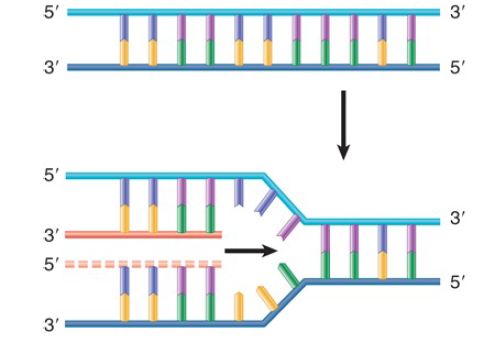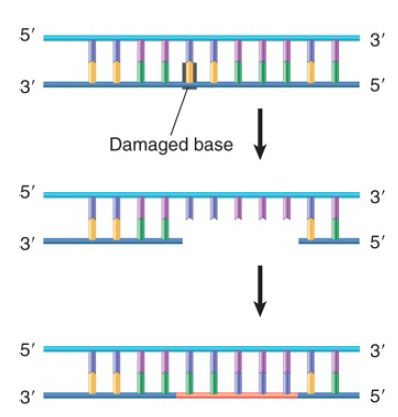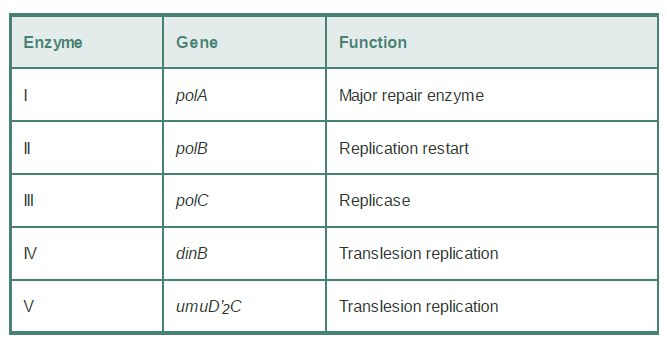

النبات

مواضيع عامة في علم النبات

الجذور - السيقان - الأوراق

النباتات الوعائية واللاوعائية

البذور (مغطاة البذور - عاريات البذور)

الطحالب

النباتات الطبية


الحيوان

مواضيع عامة في علم الحيوان

علم التشريح

التنوع الإحيائي

البايلوجيا الخلوية


الأحياء المجهرية

البكتيريا

الفطريات

الطفيليات

الفايروسات


علم الأمراض

الاورام

الامراض الوراثية

الامراض المناعية

الامراض المدارية

اضطرابات الدورة الدموية

مواضيع عامة في علم الامراض

الحشرات


التقانة الإحيائية

مواضيع عامة في التقانة الإحيائية


التقنية الحيوية المكروبية

التقنية الحيوية والميكروبات

الفعاليات الحيوية

وراثة الاحياء المجهرية

تصنيف الاحياء المجهرية

الاحياء المجهرية في الطبيعة

أيض الاجهاد

التقنية الحيوية والبيئة

التقنية الحيوية والطب

التقنية الحيوية والزراعة

التقنية الحيوية والصناعة

التقنية الحيوية والطاقة

البحار والطحالب الصغيرة

عزل البروتين

هندسة الجينات


التقنية الحياتية النانوية

مفاهيم التقنية الحيوية النانوية

التراكيب النانوية والمجاهر المستخدمة في رؤيتها

تصنيع وتخليق المواد النانوية

تطبيقات التقنية النانوية والحيوية النانوية

الرقائق والمتحسسات الحيوية

المصفوفات المجهرية وحاسوب الدنا

اللقاحات

البيئة والتلوث


علم الأجنة

اعضاء التكاثر وتشكل الاعراس

الاخصاب

التشطر

العصيبة وتشكل الجسيدات

تشكل اللواحق الجنينية

تكون المعيدة وظهور الطبقات الجنينية

مقدمة لعلم الاجنة


الأحياء الجزيئي

مواضيع عامة في الاحياء الجزيئي


علم وظائف الأعضاء


الغدد

مواضيع عامة في الغدد

الغدد الصم و هرموناتها

الجسم تحت السريري

الغدة النخامية

الغدة الكظرية

الغدة التناسلية

الغدة الدرقية والجار الدرقية

الغدة البنكرياسية

الغدة الصنوبرية

مواضيع عامة في علم وظائف الاعضاء

الخلية الحيوانية

الجهاز العصبي

أعضاء الحس

الجهاز العضلي

السوائل الجسمية

الجهاز الدوري والليمف

الجهاز التنفسي

الجهاز الهضمي

الجهاز البولي


المضادات الميكروبية

مواضيع عامة في المضادات الميكروبية

مضادات البكتيريا

مضادات الفطريات

مضادات الطفيليات

مضادات الفايروسات

علم الخلية

الوراثة

الأحياء العامة

المناعة

التحليلات المرضية

الكيمياء الحيوية

مواضيع متنوعة أخرى

الانزيمات
DNA Polymerases Are the Enzymes That Make DNA
المؤلف:
JOCELYN E. KREBS, ELLIOTT S. GOLDSTEIN and STEPHEN T. KILPATRICK
المصدر:
LEWIN’S GENES XII
الجزء والصفحة:
4-4-2021
2760
DNA Polymerases Are the Enzymes That Make DNA
KEY CONCEPTS
- DNA is synthesized in both semiconservative replication and repair reactions.
- A bacterium or eukaryotic cell has several different DNA polymerase enzymes.
- One bacterial DNA polymerase undertakes semiconservative replication; the others are involved in repair reactions.
There are two basic types of DNA synthesis:
- FIGURE 1. shows the result of semiconservative replication. The two strands of the parental duplex are separated, and each serves as a template for synthesis of a new strand. The parental duplex is replaced with two daughter duplexes, each of which has one parental strand and one newly synthesized strand. An enzyme that can synthesize a new DNA strand on a template strand is called a DNA polymerase (or more properly, DNA-dependent DNA polymerase).
- FIGURE 2. shows the consequences of a DNA repair reaction. One strand of DNA has been damaged. It is excised and new material is synthesized to replace it. Both prokaryotic and eukaryotic cells contain multiple DNA polymerase activities.
Only a few of these enzymes actually undertake replication; those that do sometimes are called DNA replicases. The remaining enzymes are involved in repair synthesis or participate in subsidiary roles in replication.

FIGURE 1. Semiconservative replication synthesizes two new strands of DNA.

FIGURE 2. Repair synthesis replaces a short stretch of one strand of DNA containing a damaged base.
All prokaryotic and eukaryotic DNA polymerases share the same fundamental type of synthetic activity, antiparallel synthesis from 5′ to 3′ from a template that is 3′ to 5′. This means adding nucleotides one at a time to a 3′–OH end, as illustrated in FIGURE 3. The choice of the nucleotide to add to the chain is dictated by base pairing with the complementary template strand.

FIGURE 3. DNA is synthesized by adding nucleotides to the 3′–OH end of the growing chain, so that the new chain grows in the 5′ to 3′ direction. The precursor for DNA synthesis is a nucleoside triphosphate, which loses the terminal two phosphate groups in the reaction.
Some DNA polymerases, such as the repair polymerases, function as independent enzymes, whereas others (notably the replication polymerases) are incorporated into large protein assemblies called holoenzymes. The DNA-synthesizing subunit is only one of several functions of the holoenzyme, which typically contains other activities concerned with fidelity.
TABLE 1 summarizes the DNA polymerases that have been characterized in E. coli. DNA polymerase III, a multisubunit protein, is the replication polymerase responsible for de novo synthesis of new strands of DNA. DNA polymerase I (encoded by polA) is involved in the repair of damaged DNA and, in a subsidiary role, in semiconservative replication. DNA polymerase II is required to restart a replication fork when its progress is blocked by damage in
DNA. DNA polymerases IV and V are involved in allowing replication to bypass certain types of damage and are called errorprone polymerases.
TABLE 11.1 Only one DNA polymerase is the replication enzyme. The others participate in repairing damaged DNA, restarting stalled replication forks, or bypassing damage in DNA.

When researchers assay extracts of E. coli for their ability to synthesize DNA, the predominant enzyme activity is DNA polymerase I. Its activity is so great that it makes it impossible to detect the activities of the enzymes actually responsible for DNA replication! To develop in vitro systems in which replication can be followed, researchers therefore prepare extracts from polA mutant cells.
Several classes of eukaryotic DNA polymerases have been identified. DNA polymerases δ and ε are required for nuclear replication; DNA polymerase α is concerned with “priming” (initiating) replication. Other DNA polymerases are involved in repairing damaged nuclear DNA, or in translesion replication of damaged DNA when repair of damage is impossible. Mitochondrial DNA replication is carried out by DNA polymerase γ, whereas chloroplasts have their own replication system.
 الاكثر قراءة في مواضيع عامة في الاحياء الجزيئي
الاكثر قراءة في مواضيع عامة في الاحياء الجزيئي
 اخر الاخبار
اخر الاخبار
اخبار العتبة العباسية المقدسة

الآخبار الصحية















 قسم الشؤون الفكرية يصدر كتاباً يوثق تاريخ السدانة في العتبة العباسية المقدسة
قسم الشؤون الفكرية يصدر كتاباً يوثق تاريخ السدانة في العتبة العباسية المقدسة "المهمة".. إصدار قصصي يوثّق القصص الفائزة في مسابقة فتوى الدفاع المقدسة للقصة القصيرة
"المهمة".. إصدار قصصي يوثّق القصص الفائزة في مسابقة فتوى الدفاع المقدسة للقصة القصيرة (نوافذ).. إصدار أدبي يوثق القصص الفائزة في مسابقة الإمام العسكري (عليه السلام)
(نوافذ).. إصدار أدبي يوثق القصص الفائزة في مسابقة الإمام العسكري (عليه السلام)


















